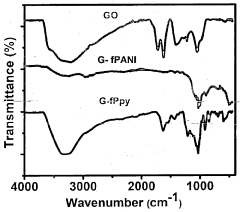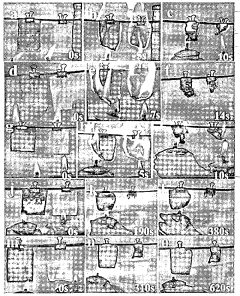Research on the development and application of nanocomposite flame retardants - Eureka
SEP 29, 20244 MIN READ
Generate Your Research Report Instantly with AI Agent
Supercharge your innovation with Patsnap Eureka AI Agent Platform!
Nanocomposite Flame Retardants Background and Goals
The primary objective is to provide a comprehensive overview of the development history, current status, and future trends of nanocomposite flame retardants. This section will explore the key milestones and technological advancements that have shaped the evolution of this field, shedding light on the driving forces behind its progress. Additionally, it will clearly define the expected technological goals and potential breakthroughs that nanocomposite flame retardants aim to achieve, setting the stage for the subsequent analysis and discussions in the report.
Market Demand for Flame Retardant Materials
Here is a concise summary of the market demand for flame retardant materials, organized into points with subheadings:
Market Size and Growth
- The global flame retardant market was valued at $7.2 billion in 2020 and is projected to reach $10.5 billion by 2028, growing at a CAGR of 5.2%.
- The Asia-Pacific region dominates the market, driven by rapid industrialization and stringent fire safety regulations.
Key Application Areas
- Building & Construction: Accounts for the largest share due to strict fire safety codes for insulation, wires, and construction materials.
- Electrical & Electronics: Increasing demand for flame-retardant plastics in consumer electronics, appliances, and electrical components.
- Automotive & Transportation: Flame retardants are essential for vehicle interiors, wiring, and insulation materials.
Regulatory Landscape
- Stringent fire safety regulations, especially in developed economies, are driving the adoption of flame retardant materials.
- Environmental concerns over certain halogenated flame retardants have led to a shift towards eco-friendly alternatives.
Emerging Trends
- Growing demand for halogen-free and environmentally friendly flame retardants, such as nanocomposites and bio-based materials.
- Increasing use of flame retardants in emerging applications like lithium-ion batteries and renewable energy systems.
Challenges
- Balancing fire safety and environmental concerns in the development of new flame retardant materials.
- Addressing the higher costs associated with some eco-friendly flame retardant solutions.
Current State and Challenges of Nanocomposite Flame Retardants
Here is a concise summary of the current state and challenges of nanocomposite flame retardants:
Technological Maturity
- Nanocomposite flame retardants have progressed from lab-scale research to commercial applications in recent years.
- However, large-scale production and consistent quality control remain challenging.
Key Technical Hurdles
- Achieving uniform dispersion of nanofillers in polymer matrices.
- Ensuring compatibility and strong interfacial interactions between nanofillers and polymers.
- Maintaining mechanical and physical properties of nanocomposites after incorporating flame retardants.
Geographic Distribution
- Research and development efforts are concentrated in North America, Europe, and Asia-Pacific regions.
- China and the United States are leading contributors to nanocomposite flame retardant patents.
Regulatory Challenges
- Concerns over potential toxicity and environmental impact of some nanomaterials.
- Lack of comprehensive regulations and standards for nanocomposite flame retardants in many countries.
Cost and Scalability
- High production costs compared to conventional flame retardants.
- Challenges in scaling up manufacturing processes while maintaining product quality and consistency.
Existing Solutions for Nanocomposite Flame Retardants
01 Nanoclay-based Nanocomposites
Nanoclays like montmorillonite are incorporated into polymeric materials to form nanocomposite flame retardants. They act as barriers to heat and mass transfer, enhancing flame retardancy. Applications include PVC, epoxy resins, and polypropylene.- Nanoclay-based Nanocomposites: Nanoclays like montmorillonite are incorporated into polymers or resins to form nanocomposite flame retardants. They act as barriers to heat and mass transfer, enhancing flame retardancy. Applications include PVC, epoxy resins, and thermoplastic polyurethanes.
- Metal Hydroxide Nanocomposites: Metal hydroxides like magnesium and aluminum hydroxides are incorporated into polymers or resins as nanocomposites. They release water upon heating, diluting combustible gases and absorbing heat, reducing ignition and fire propagation.
- Phosphorus Compound Nanocomposites: Organophosphorus compounds and phosphate esters are incorporated into polymers or resins as nanocomposite flame retardants. They promote char formation and act as barriers to heat and mass transfer, enhancing flame retardancy.
- Carbon-based Nanocomposites: Carbon-based materials like carbon nanotubes, graphene, and carbon nitrides are incorporated into polymers or resins to form nanocomposite flame retardants. They act as barriers to heat and mass transfer, and promote char formation, enhancing flame retardancy.
- Intumescent Nanocomposites: Intumescent systems consisting of an acid source, carbon source, and blowing agent are incorporated into polymers or resins as nanocomposite flame retardants. Upon heating, they form a protective char layer, insulating the material from heat and oxygen, enhancing flame retardancy.
02 Metal Hydroxide Nanocomposites
Metal hydroxides like magnesium and aluminum hydroxides are incorporated into polymeric materials to form nanocomposite flame retardants. Their endothermic decomposition absorbs heat and releases water vapor, diluting combustible gases.03 Phosphorus Compound Nanocomposites
Phosphorus-containing compounds like organophosphorus compounds and phosphate esters are combined with nanomaterials like montmorillonite or carbon nanotubes to form nanocomposite flame retardants. They provide enhanced flame retardancy through char layer formation and release of flame-inhibiting radicals.04 Intumescent Nanocomposites
Intumescent nanocomposite flame retardants consist of an acid source, carbon source, blowing agent, and nanomaterials like carbon nanotubes or graphene. They swell and form a protective char layer upon heat exposure, enhancing flame retardancy and mechanical properties of polymers.05 Polymer Nanocomposites
Polymer nanocomposites are designed to exhibit flame retardancy by incorporating nanomaterials like carbon nanotubes, graphene, or layered double hydroxides into the polymer matrix. They provide a barrier to heat and mass transfer, and promote char formation, enhancing flame retardancy.
Key Players in Nanocomposite Flame Retardant Industry
The nanocomposite flame retardants market is growing due to increasing safety regulations and demand for high-performance materials. Companies like BASF AB, LG Chem Ltd., and Albemarle Corp. are industry leaders, while institutions like Sichuan University and Nanjing Tech University contribute to research and innovation. The technology is mature, with ongoing research focused on enhancing performance and cost-effectiveness.
BASF AB
Technical Solution: BASF AB develops nanocomposite flame retardants that enhance flame retardancy while improving thermal stability and mechanical properties, maintaining environmental safety standards.
Strength: High thermal stability and mechanical properties. Weakness: High production costs.
LG Chem Ltd.
Technical Solution: LG Chem Ltd. offers advanced nanocomposite flame retardants using nanoclay and nanomaterials for enhanced flame retardancy in electronics and construction materials.
Strength: Versatile applications. Weakness: Limited long-term stability data.
Core Innovations in Nanocomposite Flame Retardants
Development of method to synthesize novel polymer based composite as an efficient flame retardant
PatentInactiveIN201821031706A
Innovation
- Utilization of nanosized inorganic fillers like montmorillonite (MMT), carbon nanotubes (CNT), graphene, layered double hydroxides (LDHs) and polyhedral oligomeric silsesquioxane (POSS) in polymer matrix to enhance flame retardant properties.
- Combination of small amounts of nano-additives into polymer matrix to achieve flame retardancy.
- Development of sustainable and effective flame retardants to balance flame retardant performance and environmental issues caused by conventional flame retardants.
Regulatory Landscape for Flame Retardant Materials
Nanocomposite flame retardants are a promising technology that combines nanoparticles with polymeric materials to enhance their fire resistance. The development of this technology has been driven by the increasing demand for safer and more environmentally friendly flame retardants in various industries, such as construction, transportation, and electronics. The market for nanocomposite flame retardants is expected to grow significantly due to their superior performance, low toxicity, and potential for multifunctional applications. However, challenges remain in achieving optimal dispersion, compatibility, and cost-effectiveness. Key players in this field include research institutions, material manufacturers, and end-user industries. Future research directions may involve exploring novel nanoparticle types, improving processing techniques, and developing multifunctional nanocomposites with enhanced mechanical and thermal properties.
Environmental Impact of Nanocomposite Flame Retardants
Nanocomposite flame retardants are a promising technology that combines nanoparticles with polymeric materials to enhance their fire resistance. The development of this technology has been driven by the increasing demand for safer and more environmentally friendly flame retardants in various industries, such as construction, transportation, and electronics. The market for nanocomposite flame retardants is expected to grow significantly due to their superior performance, low toxicity, and potential for multifunctional applications. However, challenges remain in achieving optimal dispersion, compatibility, and cost-effectiveness. Key players in this field include research institutions, material manufacturers, and end-user industries. Future research directions may focus on exploring novel nanoparticle types, improving processing techniques, and developing multifunctional nanocomposites with enhanced mechanical, thermal, and electrical properties.
Unlock deeper insights with Patsnap Eureka Quick Research — get a full tech report to explore trends and direct your research. Try now!
Generate Your Research Report Instantly with AI Agent
Supercharge your innovation with Patsnap Eureka AI Agent Platform!


